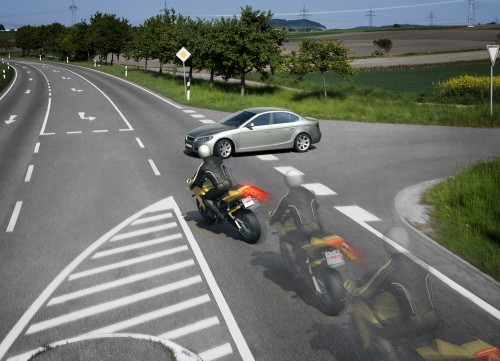The EU commission has recently announced its plans to make ABS mandatory for motorcycles. The presented proposal is currently passing through the EU legislative procedure, and will likely be adopted next year. The regulation is to come into effect from 2017. On the basis of a new generation of brake control systems, Bosch has developed an independent series for motorcycles for the first time. “The ABS 9 systems for motorcycles are the world’s smallest,” says Dr. Werner Struth, president of the Bosch Chassis Systems Control division. “This is our way of encouraging manufacturers to install this life-saving safety system in all motorcycles equipped with hydraulic brakes.” Bosch began producing the new motorcycle ABS in late 2009.

16 percent of all newly manufactured motorcycles in the EU in 2010 are equipped with the ABS antilock braking system
In 2008, the number of motorcyclists involved in fatal accidents in the European Union came to 5,520 – 14 percent of all road deaths. The figure for the same period in Germany was 656. The European figure has scarcely changed since 1997, yet the number of fatal accidents involving car drivers fell significantly during the same period – by 49 percent, as an analysis of 17 European countries shows. According to the European Transport Safety Council (ETSC), the risk of suffering a fatal accident is 18 times greater for motorcyclists than for car drivers in Europe, assuming that the same distance is traveled. And although the first antilock braking system to be installed in a motorcycle dates back to 1988, just 16 percent of all newly manufactured motorcycles in Europe are equipped with this safety system – only every sixth motorcycle, in other words. In passenger cars, by contrast, a self commitment on the part of automakers made ABS standard equipment in 2004, and the system has been providing more safety for drivers since then.
Suppliers all used to use ABS technology for passenger cars as the basis for their motorcycle ABS systems. Now, the experts at the Bosch engineering center in Japan have for the first time designed a series specifically for motorcycles. With greatly reduced volume and weighing just 0.7 kilograms, the entry-level product ABS 9 base is half the size and weight of its predecessor. This makes it by far the most compact system in the market. Its design is also cost-effective, which is important if it is to be used widely in all motorcycles with hydraulic brake systems. The ADAC, the largest automobile association in Germany, has recognized this new system by presenting its Award “Gelber Engel” (yellow angel) in the category innovation and environment. Bosch produced its first motorcycle ABS as early as 1994.
Experts regard the antilock braking system as a huge boost to safety. For example, a benefit analysis conducted for the European Commission calculates that the proposed regulation will allow the number of fatal accidents among motorcyclists to be reduced by more than 5,000 over a ten-year period. A study presented by V?gverket, the Swedish highways authority, in October 2009 shows that 38 percent of all motorcycle accidents involving personal injury and 48 percent of all serious and fatal accidents could be prevented with the help of ABS. This active safety system allows motorcyclists to brake safely in critical situations without locking the wheels, and thus without having to fear an inevitable fall. Braking distance is also reduced considerably.
via Bosch

